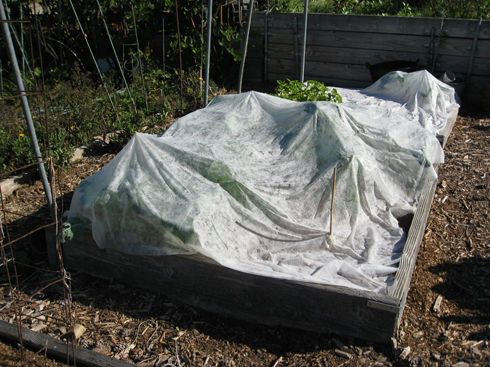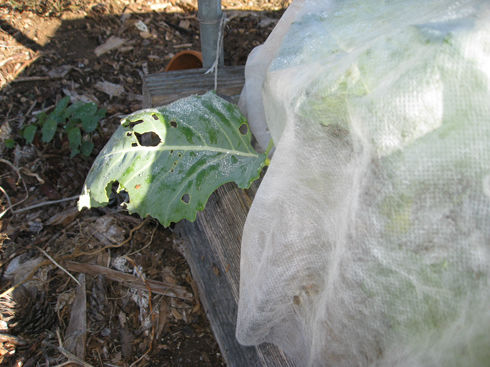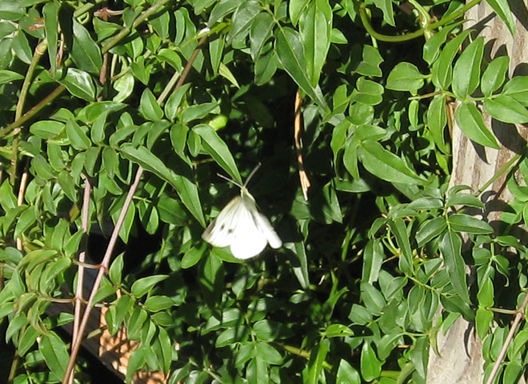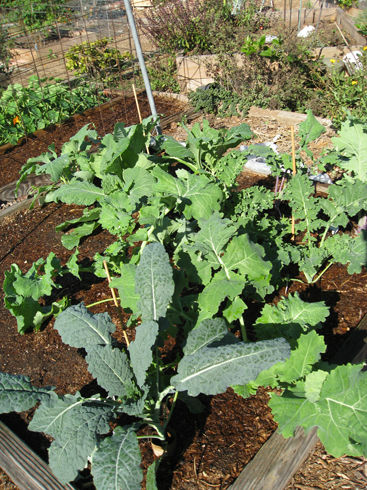Just a few moments in the garden reveal that it must be mating season for the cabbage moth. These deceptively cute white butterflies can be found twirling around one another and fluttering about the garden, looking for a good place to lay their eggs. Be prepared.
We planted out our kale and cabbage crops early this year, but took the precaution of covering them with floating row cover to keep the critters from settling in.

We used bamboo stakes to keep the cover above the crops. One of them has poked through.
After a windy day, the bulk of the crop remained covered, but one corner became exposed to the elements. The damage is clear. We pulled at least 3 caterpillars off the leaves on the first day that we discovered the exposure.

Cabbage moths hatch on the underside of the leaves and devour your plants
The culprit was not far from the scene of the crime.

Cabbage moth touches down for a brief moment to rest. Note the black dots on the wings, the signature identifier of the moth.
The rest of the crop, however, underneath the protective row cover was virtually untouched. We’ve only found a few worms among the entire crop, and we’ve already harvested a couple batches of leaves.

Virtually no damage to any of the covered plants.
So if you’ve ever doubted that floating row cover can save your plants, let this be proof positive that it works. Need more details about cabbage moths and worms? Read all about them in this previous blog post.








We just planted our kale babies and covered them, something we had not done until this year. We are hoping for a crop without holes! Thanks for the great idea!!